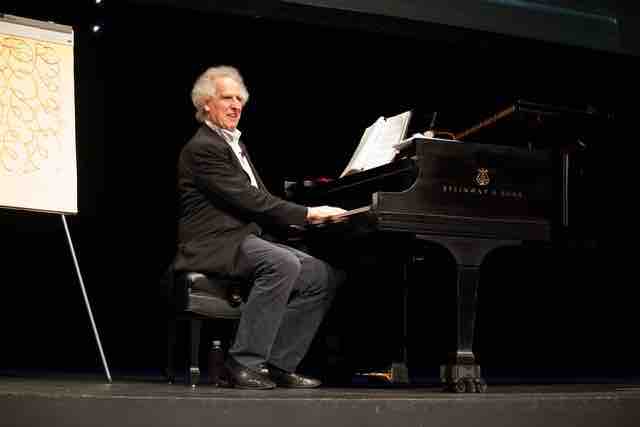Introduction

Does the Music Conform?
Whether or not someone enjoys this concert may depend on their pre-existing views regarding the type of music. You'll face the same challenge when giving a persuasive speech.
The selective exposure theory is a concept in media and communication research that refers to individuals' tendency to favor information that reinforces preexisting views while avoiding contradictory information. This theory suggests that people tend to select specific aspects of exposed information based on their perspective, beliefs, attitudes, and decisions. People can determine the information exposed to them and select favorable evidence, while ignoring the unfavorable.
This theory has been explored using the cognitive dissonance theory, which suggests information consumers strive for results of cognitive equilibrium. In order to attain this equilibrium, individuals may either reinterpret the information they are exposed to or select information that is consonant with their view.
The premise of selective exposure relies on the assumption that information-seeking behavior continues even after an individual has taken a stance on an issue. Previous information-seeking behavior will be colored by various factors of the issue that is activated during the decision-making process. Thus, selective exposure operates by reinforcing beliefs rather than exposing individuals to a diverse array of viewpoints, which is considered an important aspect of a functioning democracy.
There are several factors that persuade one when making decisions. Physical characteristics, age, and more hold power to sway perception, luring people into habits of selective exposure. People often stray away from new information because it conflicts with their own beliefs; because information and resources are critical to learning this habit cripples the ability to learn new concepts and skills.
Selective exposure influences and family, friends, co-workers, even skilled professionals like doctors. Media forms such as the internet, television, and paper sources are also inclined to selective bias.
Selective exposure has been demonstrated in various contexts such as self-serving situations and situations where people hold prejudices regarding out-groups, particular opinions, and personal and group-related issues. The perceived usefulness of information, perceived norms of fairness, and curiosity regarding valuable information are three factors that can counteract selective exposure. Remember this as your prepare your persuasive speech.
How does selective exposure theory affect decision-making?
Selective exposure can affect the decisions people make because people may not be willing to change their views and beliefs. Changing beliefs about one's self, other people, and the world are all challenges that cause people to fear new information.
A variety of studies have shown that selective exposure effects can occur in context of both individual and group decision making.
Selective exposure can interfere or prevent the gathering of new information. Selective exposure is prevalent in both groups of people and individually. In Jonas et al. (2001) empirical studies were done on four different experiments investigating individuals' and groups' decision making. This article suggests that confirmation bias is prevalent in decision making.
Those who find new information often draw their attention to areas where they hold some personal attachment. Thus, information that supports the expectations or beliefs held by the person draw greater attention, in keeping with selective exposure theory. Throughout the four experiments, generalization was reliably considered valid and confirmation bias was always present when test subjects sought new information and made decisions.
Tips for the Speaker
Be prepared. Like it or not, you are going to face selective exposure from your audience as you try to persuade them to accept your stance. When preparing your speech, remember that perceived usefulness of information, perceived norm of fairness, and curiosity regarding valuable information can counteract selective exposure.